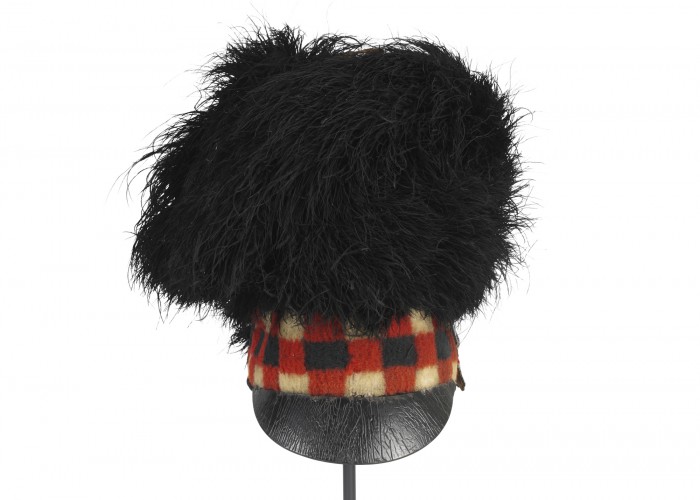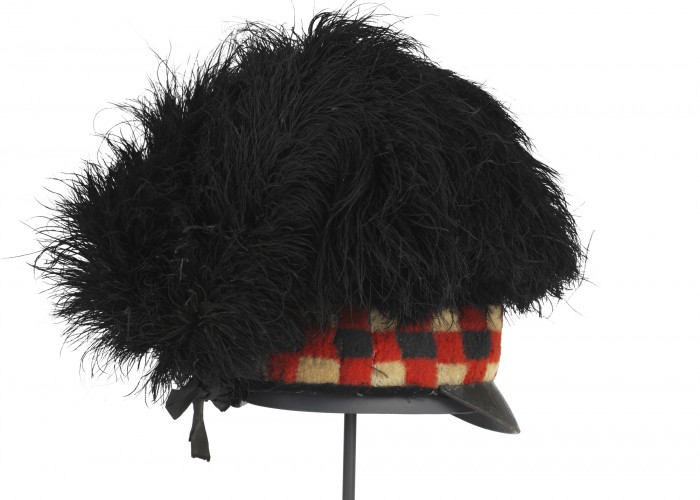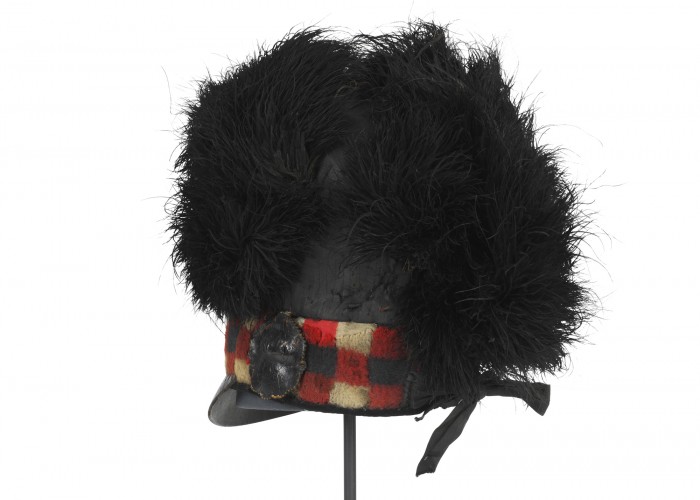Highlander’s Bonnet

 Highland Bonnet. Copyright National Army Museum.
Highland Bonnet. Copyright National Army Museum.
 Highland Bonnet. Copyright National Army Museum.
Highland Bonnet. Copyright National Army Museum.
This is the feather bonnet of an officer who fought in the Waterloo Campaign as part of a Highland Regiment. While most British soldiers wore black leather shako cap, Scottish Highlanders wore these bonnets, decorated with dyed ostrich feathers.
The unique dress of the Highland Regiments caused much fascination among European observers, both allies and enemies. When the British Army occupied Paris after the Battle of Waterloo, intrigued French ladies were observed lining the streets to watch Highland soldiers march in kilt and bonnet.
Thousands of the British Army soldiers who fought at the Battle of Waterloo were Scottish. The Duke of Wellington’s army included The Royal Scots Greys, the Scots Guards, the Royal Highland (42nd), the Highland Light Infantry, the 73rd Foot (later 2nd Black Watch), the Cameron Highlanders (79th) and the Gordon Highlanders (92nd). Of these, however, only the Highlanders (73rd, 79th, & 92nd) wore this bonnet.
At this period, most officers and men wore the well-known Kilmarnock bonnets (reflecting the place of manufacture). Most were produced by James MacLean of Kilmarnock. The bonnet was made of heavily knitted, felted and padded blue wool. About six inches high, they sported a three-inch wide diced band, with a red check on a white background. At the junction of the red check lines, green, blue or sometimes white or yellow squares featured, according to the regiment.
In undress (not on parade or on the battlefield), the plain woollen bonnet was worn (called the ‘hummel’). The cap rim could be tightened by tapes. A woollen tufted ball (the ‘tourie’) varying in colour (according to grenadier, light or battalion companies) was situated at the top of the bonnet. Black or red cockades decorated the left side of the bonnet, often with the regimental number or device. In many duties, black ostrich feathers (large and small), as seen in this example, were fixed by the cockade and these draped over the bonnet top, so heightening the hat height. The bonnet usually sported a black leather peak.
As the war dragged on, the feathers became hard to replace and just a coloured woolen tuft was displayed, as with the usual infantry shakoes. With foul weather, the bonnets could be pulled down to afford some warmth to the wearer’s head.
-
Curatorial info
- Originating Museum: National Army Museum
- Accession Number: NAM. 1961-07-1
- Production Date: c. 1813
- Material: Feathers, felt, leather
- Creation Place: Kilmarnock, Scotland
-
Use this image
You can download and use the high resolution image under a Creative Commons licence, for all non-commercial purposes, provided you attribute the copyright holder.
- Rights Holder: Copyright National Army Museum. Photography Relic Imaging Ltd.
- License Type: Creative Commons
Find it here
This object is in the collection of National Army Museum









